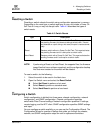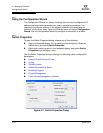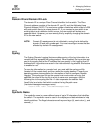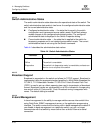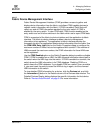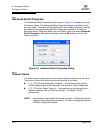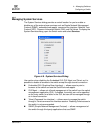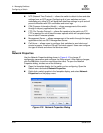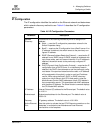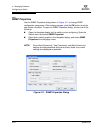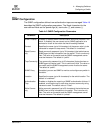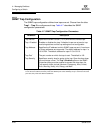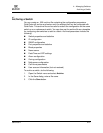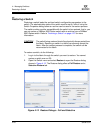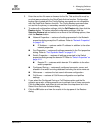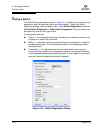
4 – Managing Switches
Configuring a Switch
59234-03 A 4-23
A
4.6.5.1
IP Configuration
The IP configuration identifies the switch on the Ethernet network and determines
which network discovery method to use. Table 4-5 describes the IP configuration
parameters.
Table 4-5. IP Configuration Parameters
Parameter Description
Network
Discovery
Choose one of the following methods by which to assign the IP
address:
Static — uses the IP configuration parameters entered in the
Switch Properties dialog.
BootP — acquires the IP configuration from a BootP server. If no
IP address is obtained, the switch reverts to the previously con-
figured IP address.
RARP (Reverse Address Resolution Protocol) — acquires the IP
address from a RARP server. A RARP request is broadcast with
up to three retries, each at 5 second intervals. If no IP address is
obtained, the switch reverts to the previously configured IP
address.
DHCP (Dynamic Host Configuration Protocol) — acquires the IP
configuration from a DHCP server. If no satisfactory lease is
obtained, the DHCP client attempts to use the previously config-
ured lease. If the previous lease cannot be used, no IP address
will be assigned to this switch in order to avoid an IP address
conflict. When using the BootP, DHCP, or RARP discovery
method on a fault-tolerant dual-CPU blade switch, enter the
Media Access Control (MAC) addresses of both CPU blades in
the corresponding server. This associates both MAC addresses
with the same IP address. The Show Version command displays
the CPU blade MAC address.
IP Address Internet Protocol (IP) address for the Ethernet port. The default value
is 10.0.0.1.
Subnet mask Subnet mask address for the Ethernet port. The default value is
255.0.0.0.
Gateway IP gateway address. The default value is 10.0.0.254.
Active Ethernet
Port
Use this option to activate the two CPU Ethernet connections on the
backplate, or activate the two Maintenance Panel Ethernet
connections on the faceplate.



